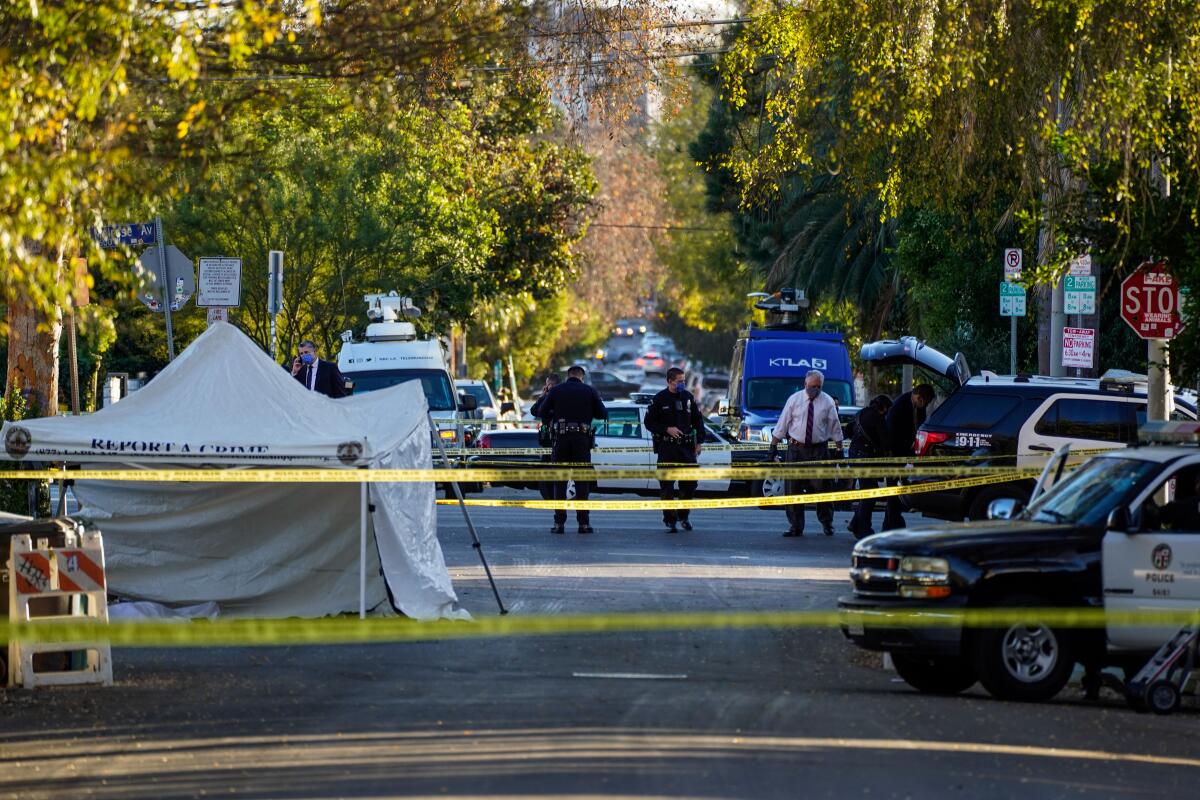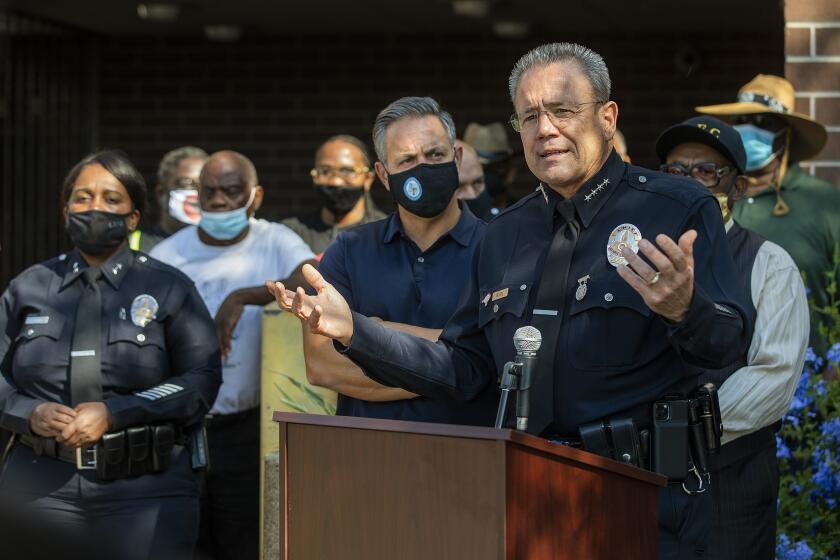Rise in California homicides echoes the nation, but state fares better in violent crime, FBI stats show

- Share via
California’s 31% jump in homicides in 2020 reflected a national trend that saw the largest one-year increase since the FBI began collecting numbers in the 1960s, the bureau said Monday.
The national increase was 29.4%, according to FBI statistics.
The numbers also showed an increase in fatal gun violence. Nationwide, guns accounted for 76% of the weapons used in slayings last year, up from 73% in 2019, according to the FBI report.
That, too, echoed California’s Department of Justice numbers released in July that showed gun fatalities in 2020 accounted for nearly 3 out of 4 of 2,202 homicides in the state compared with 69% the year before.
“What is really striking is that this was a universal increase from the big cities to the smaller communities,” said Richard Rosenfeld, a criminologist at the University of Missouri St. Louis. “When you see it ... everywhere in the U.S. that isn’t a local phenomenon.”
Latino and Black victims account for nearly all of the surge in homicides in Los Angeles since the start of the COVID-19 pandemic, according to a Times analysis of LAPD data.
The fact that California and the rest of the nation behaved similarly when it comes to more homicides, he said, would seem to suggest that “all the ideas that red states differ from blue states are nonsense.”
Rosenfeld said more universal explanations and the most obvious are how the coronavirus pandemic affected society and how the killing of George Floyd by Minneapolis police set off widespread unrest.
National research he and others conducted on the pandemic’s effects on the criminal justice system showed that homicides climbed following the Floyd protests.
There are a number of explanations, Rosenfeld said. In many cities officers were diverted from normal patrols to protest duty, and the pandemic sidelined large chunks of departments because of illness or quarantine.
Rosenfeld said the increasing use of guns in violent crime reflected in the FBI data also goes hand in hand with a much higher rate of police detaining people carrying firearms in 2020.
A reporter reflects on years spent covering killings in Los Angeles County and what that’s taught her about people and human nature.
The surge of homicides nationwide along with more aggravated assaults resulted in a 5.6% increase in violent crime last year, according to the FBI’s Uniform Crime Report.
California, however, fared better on this count with a less than 1% increase in overall violent crime. That number was driven by a 14% decline in robberies and an 8% drop in reported rapes; aggravated assaults increased nearly 9%.
The pandemic and its accompanying stay-at-home orders and other restrictions led to erratic changes in crime patterns in 2020, UC Berkeley noted in a recent report to Gov. Gavin Newsom’s committee on penal code revisions. California had generally more restrictive measures for longer periods.
As coronavirus took its toll, leading to a wave of shutdowns and forcing workers to stay home, property crime fell 7.8% nationwide in 2020, according to the FBI. That is the 18th straight year property crimes have dropped. That mirrored California’s 7.7% decline.
More to Read
Sign up for Essential California
The most important California stories and recommendations in your inbox every morning.
You may occasionally receive promotional content from the Los Angeles Times.













